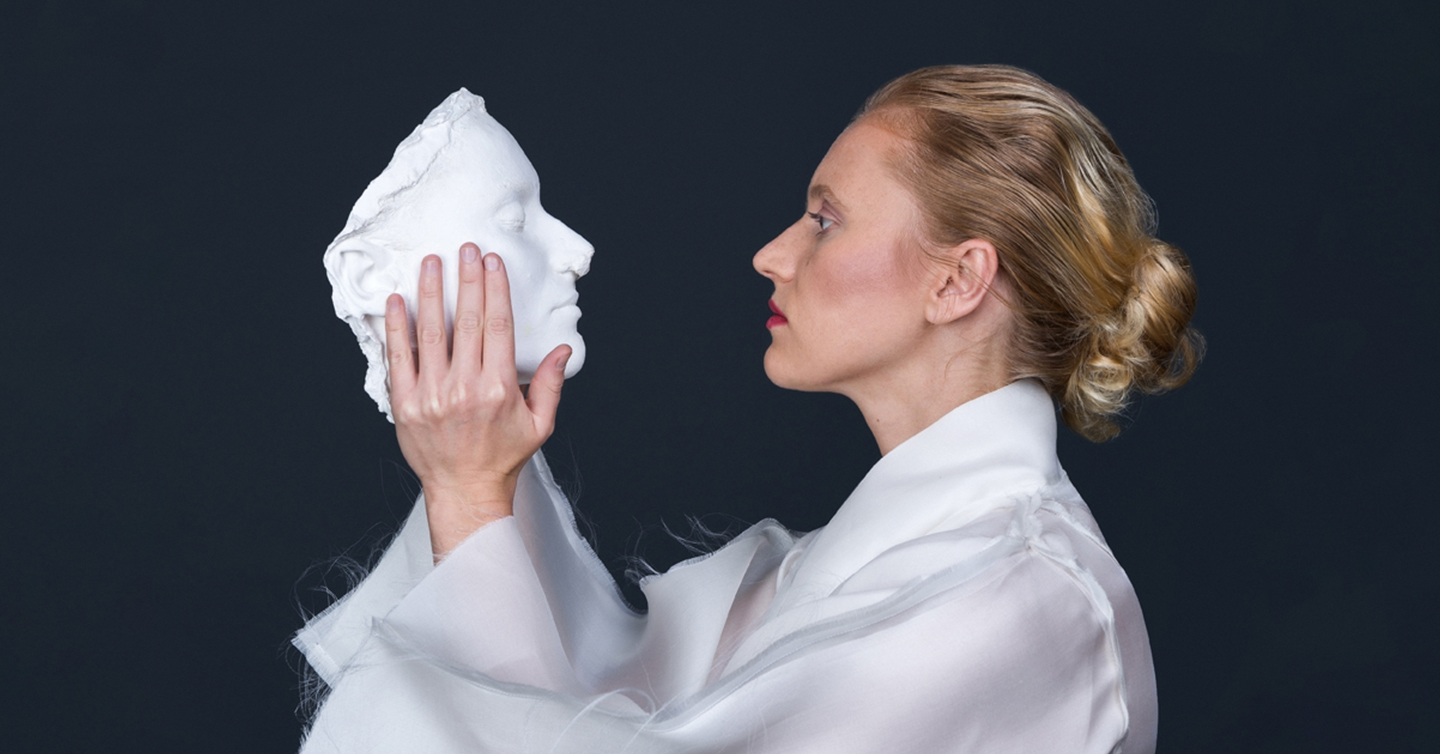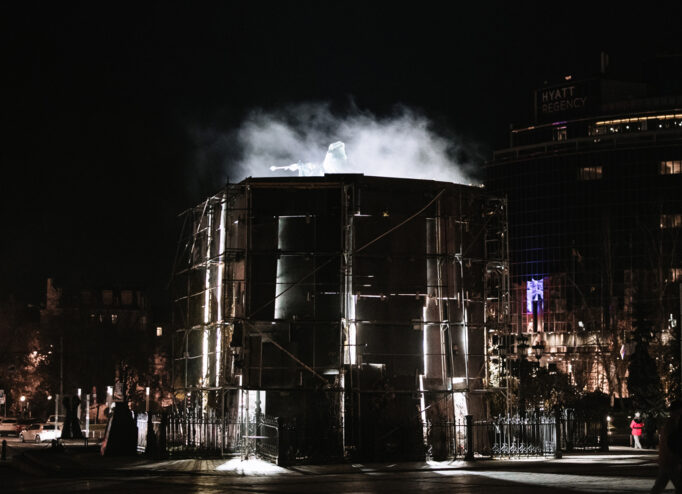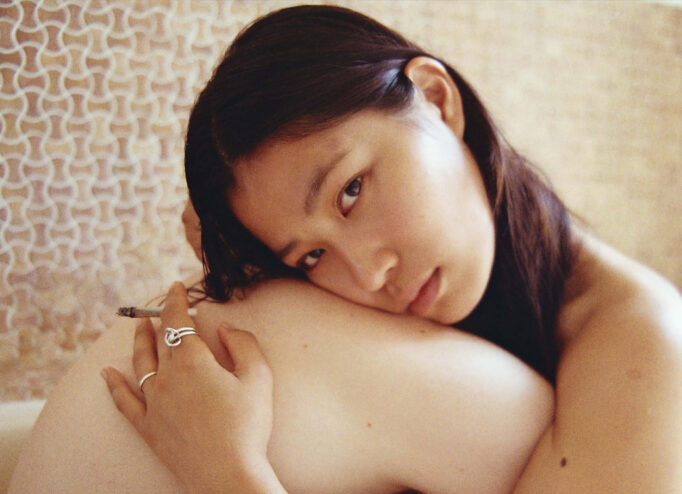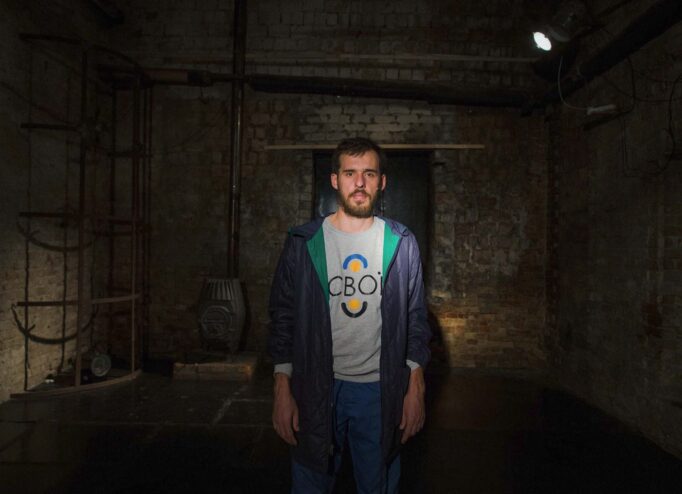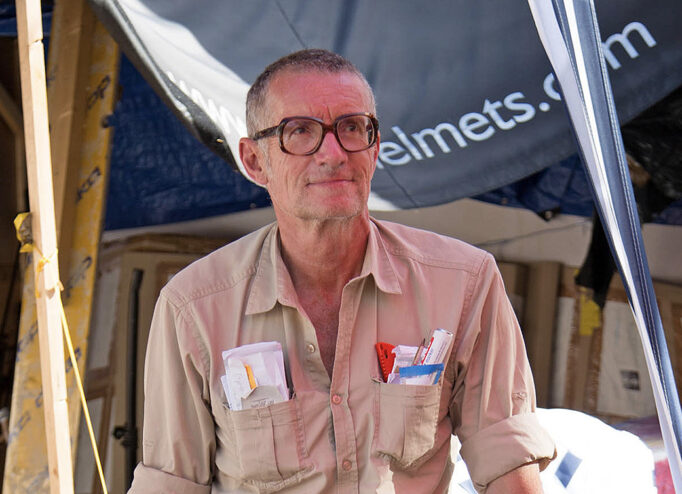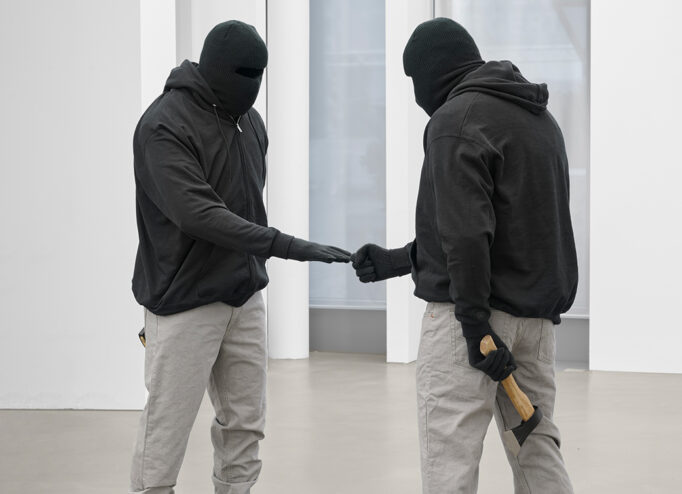Maria Kulikovska is known for her performative sculptures, often made from «non-sculptural materials»: ballistic soap, epoxy resin with the addition of blood, semen, flowers and chains. Among her most influential projects are «Army of Clones» (2010) and «Homo Bulla — Human as Soap Bubble» (2012): these sculptures were shown at the «Izolyatsia» Art Centre in Donetsk, and in 2014 they were shot by the militants of the so-called DPR.
Since russia’s 2014 annexation of Crimea, Maria has devoted much attention to the theme of war and russian aggression, including in her performance art. During the action «254» (2014), the artist lay on the stairs of the Hermitage Museum in the wounded soldier position, covered by the Ukrainian flag. During the first part of the social sculpture «Raft CrimeA: Migrating Parliament of All Migrants» (2016), she was floating on a raft on the Dnipro until she was detained by the state border service.
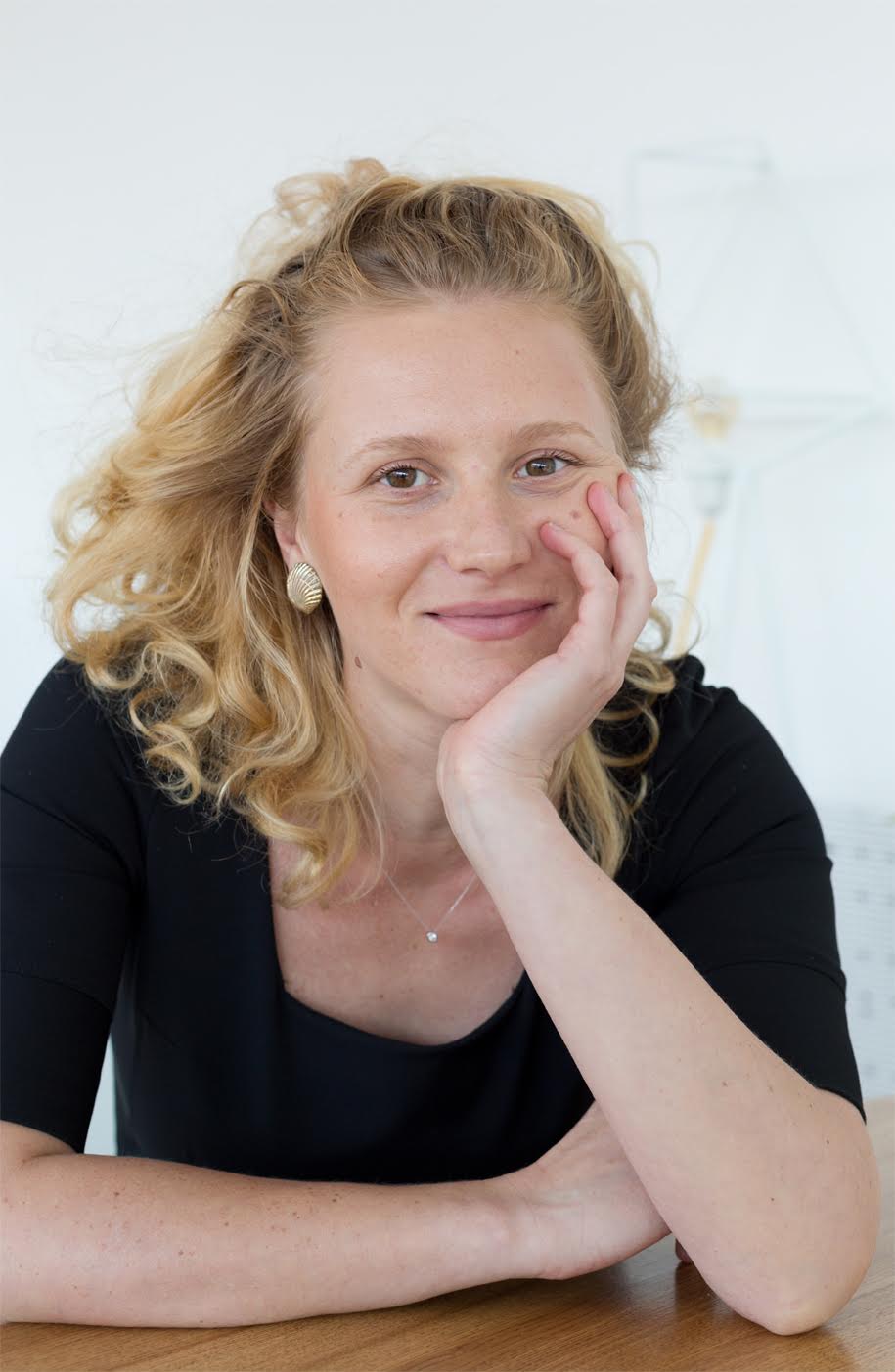
And during her performance «War and Peace» (2016), Kulikovska screamed into the sand of the mined beach of Mariupol, thus emphasizing the «forced normalization of the war for those people who have lived near the line of separation for many years».
The theme of russian aggression is also present in the sculpture «Folds of Time / Folds of Memory» (2016), which Kulikovska will show in the MOT cultural space. This work captures the artist’s emotions from constant military information about the deaths and injuries of civilians in russia’s war against Ukraine.
The DTF Magazine contacted Maria via Zoom to ask about some of the components of her art: about the influence of her profession as an architect on her artworks and the content of her role as a pro-russian journalist in «The Forgotten», about the significance of the number 88 in her performances and the use of flowers as a symbol of the fragility of life in her sculptures.
About life in exile and thoughts about returning home
— You started living and working mostly abroad after the annexation of Crimea. Do you see how your inner state as a refugee has changed, apparently because of the full-scale invasion? What was it like in 2015 and what is it like now?
— No, I didn’t live abroad, but mainly in Kyiv. But I worked a lot in Europe for different projects and exhibitions, and it so happened that I was engaged in it most of the time abroad. I have no answer why, maybe my art is clearer and more interesting there than in Ukraine. But in 2020, for example, I lived in Kyiv all the time and never left it. Then we left there not right away, but a month after the full-scale invasion, because it is not very comfortable to be on the 21st floor in Kyiv under shelling, sometimes without light, water or heat, with a small child. But I didn’t fully understand the question, what changes was I supposed to see?
— Changes in the inner state of refugee women.
— This wording seems incorrect to me, because I am not a refugee, but an internally displaced person from Crimea. Although I wasn’t even displaced, I just didn’t return home. When the annexation took place, I was not in Crimea. I went to the Pinchuk Art Center Prize (in 2013 Maria was nominated for her performative sculptural installation «Soma — Body without Gender». — Note from DTF Magazine), then the Maidan started, I made a performance in Sweden as an act of solidarity with the Maidan and the vector that Ukraine had chosen against Yanukovych’s dictatorship.
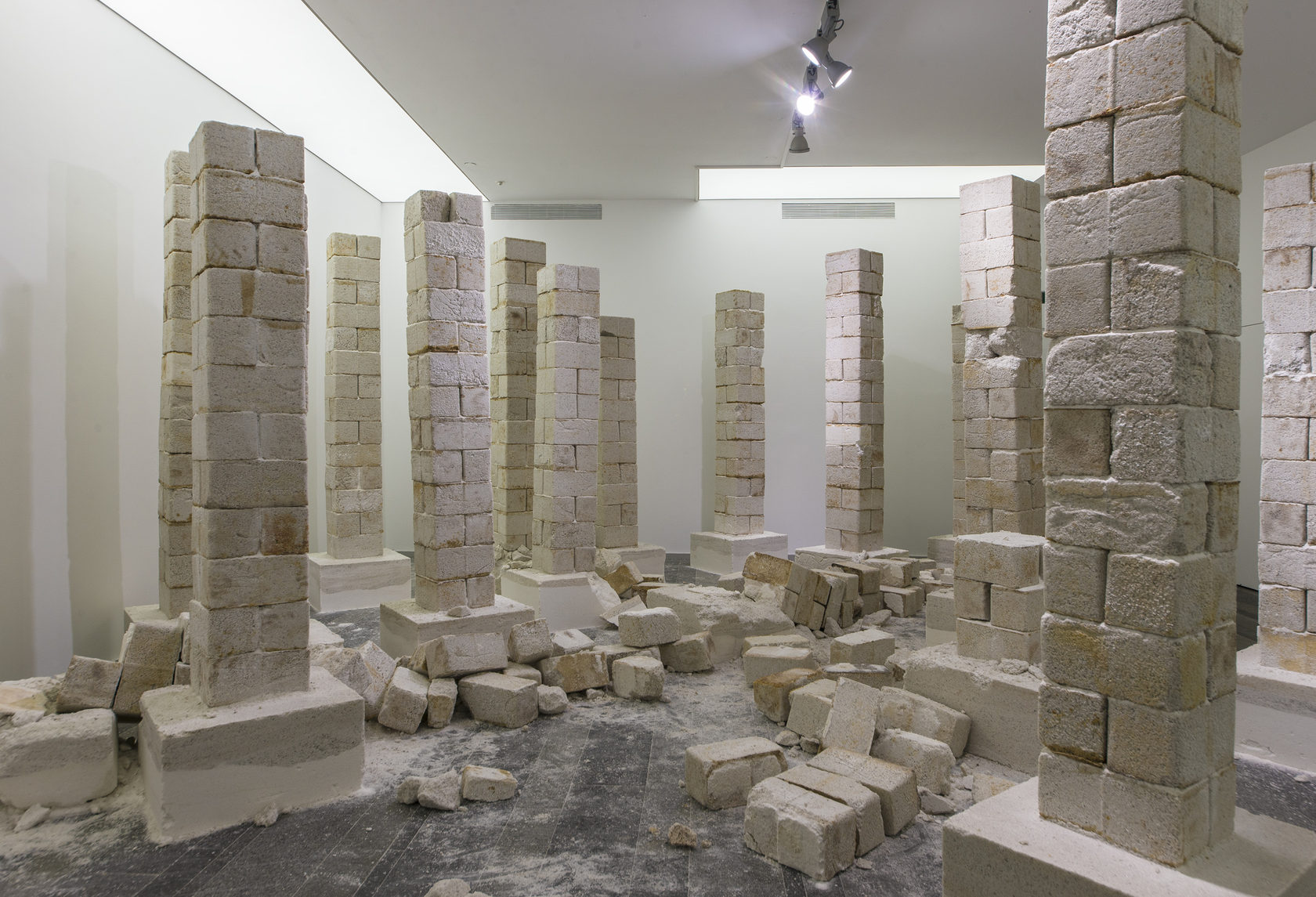

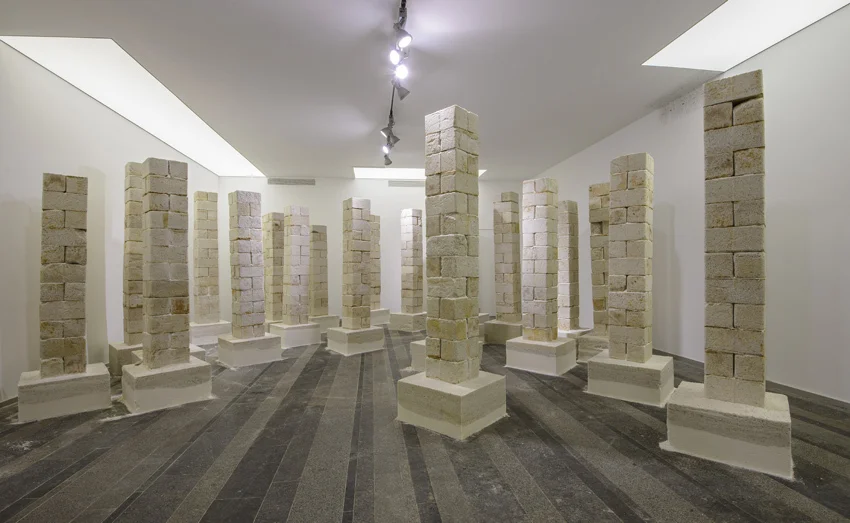
On the night of my return from Europe to Kyiv, people were shot on the Maidan, and in the early morning no one was allowed out of the airport for some time. And then titushky and russian buses drove into the island, into my city of Kerch, tearing down Ukrainian flags: all this horror began in February 2014, too. My relatives called me on the phone and told me not to go, because things started to get very bad, and then I realized that it was open aggression.
I can’t go back to Crimea, because according to the legislation of the Russian Federation, which is now in effect there, I don’t even have the right to my house. Everyone who has not received a russian passport has no right to live, receive an inheritance, or have their own property. And in addition to these absolutely illegal actions there is such a thing as lists.
According to these lists, I fall under arrest under several articles at once. The fact that I entered same-sex marriage publicly and declared this in the performance «Body and Borders» (2014) falls under the article on LGBT propaganda, the performance «Raft CrimeA» (2016) — under extremist and separatist activity against the sovereignty of the russian federation: you could face up to 20 years in prison and confiscation of property under these articles, and another 20 years in a particularly strict regime for extremism. So this is a completely different story: it’s not refugeedom, but exile.

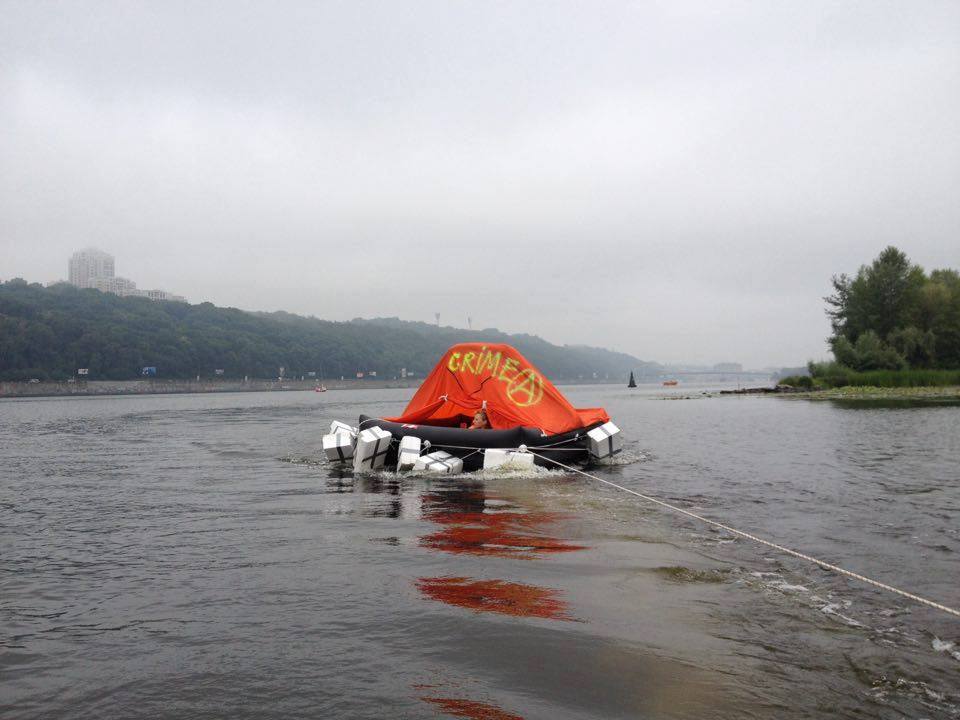


— How often do you imagine the moment of return? How do you see that moment?
— I haven’t thought about this moment, and I don’t see it as anything special: I’ll just go away. But I’m just thinking ahead: what I can do and how I can be useful there. When I was a kid, on New Year’s Eve, I always wrote a letter to Santa, and now I write letters to myself outlining plans, ideas and dreams for the next year, even the most fantastic ones. This year I thought about what I could do in Kerch, at our local gallery.
It’s an incredibly beautiful space, right next to the Great Mithridates Staircase. I used to go there when I was a kid, and then I bought paints for myself.
Nothing happens there at all, all the time there is an exhibition of the same artist (in the Kerch Art Gallery there is a main exhibition with paintings by Soviet artist Mykola But since 1985. — Note from DTF Magazine).
I wrote a cool program: I would like to bring works by Louise Bourgeois and Joseph Beuys, to invite curators and representatives from friendly museums I have collaborated with. I would make this gallery an advanced intellectual and visual platform, not a dying propaganda institution. It would show international exhibitions, and people would talk about art and reflect.
I think that if the gallery space exhibited the work of international artists who openly and honestly talk about the conflict and all these horrors of war, not through the prism of russian or Soviet propaganda, but through the prism of human life, it would be an important point on the cultural map.
I also wrote a lot in that letter that I wanted to start revitalizing Kerch, because there is so much cool things there: it is one of the oldest cities in the world, «the cradle of civilization». Of course, Crimea as a whole, and Kerch in particular, must first be decolonized, because everything there is permeated with russian propaganda.
For example, the gymnasium where I studied was an educational institution for two hundred years, and now it’s a museum of russian military glory or something like that. They kicked all the kids out and made an antediluvian stand about how «great» russia is. I hope that someday this gymnasium will be an educational institution again, because that was the will of the patron who built it.
— Your long-term performance «Lustration / Ablution» is scheduled to be performed 88 times. Why this number and what should happen in the finale?
— For me 88 is a personal story and superstition about numbers: I was born in 1988 and I set a goal to live until I am 88. I also hope that when I am 88 years old, I will finally be able to go home and bring this performance to life. I will be able to build more than one space of contemporary art and culture so that there is no more war. That’s what I wanted to do.
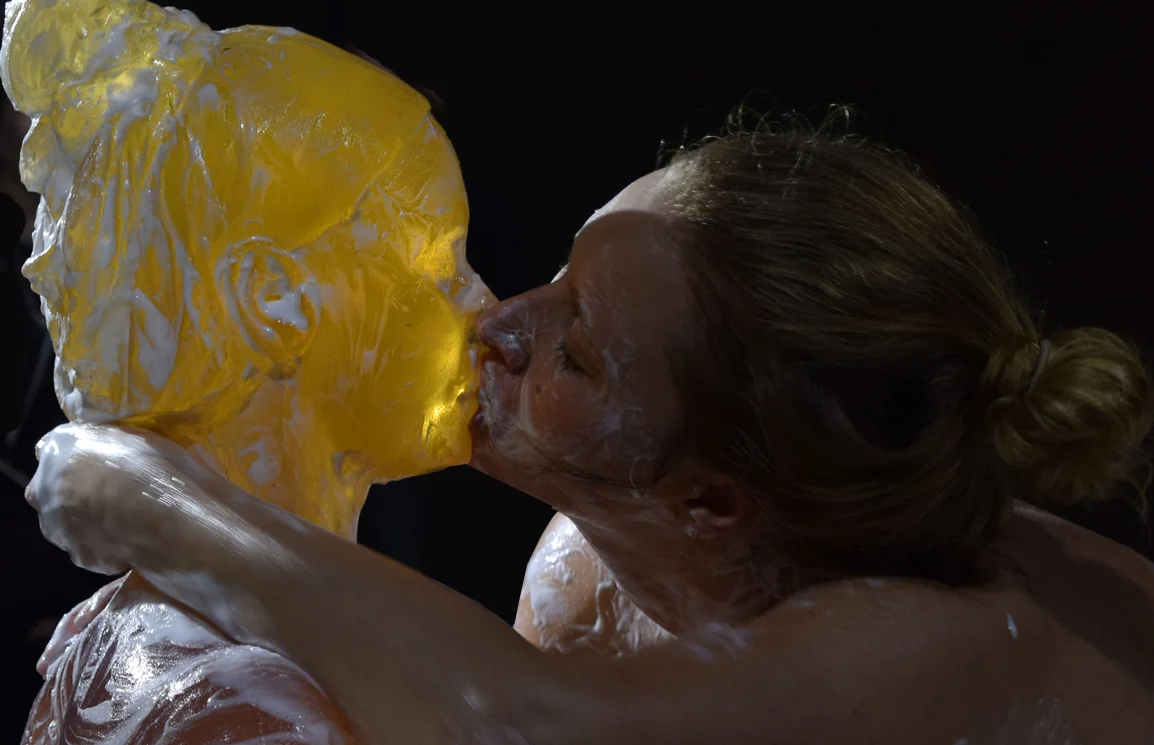
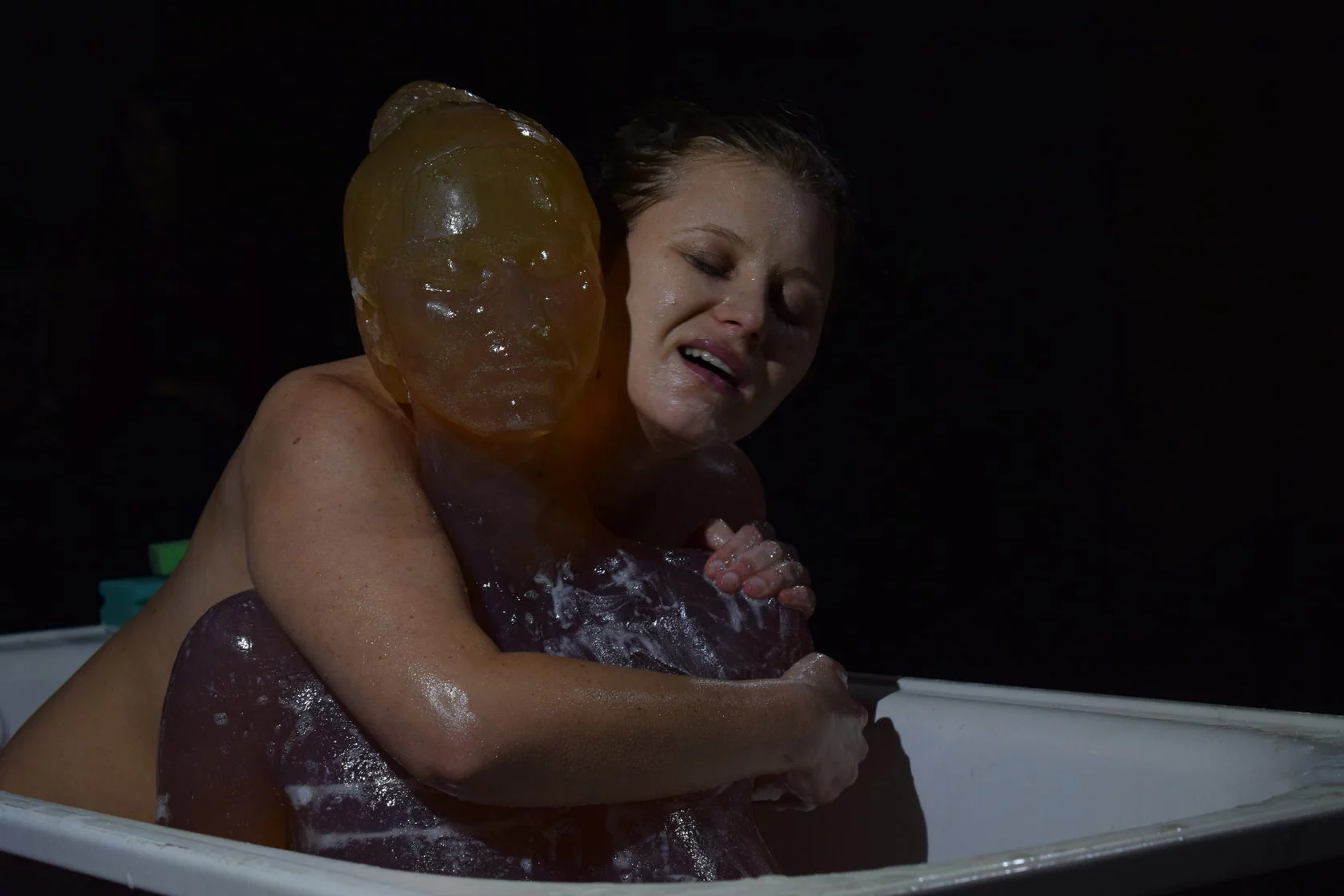
About shot sculptures and russians who show a distorted world
— Your work «Table of negotiations?» depicts quite realistically why sitting down to negotiate with the russians is a bad idea. But history repeats itself, Ukraine fights against the russian aggression at different stages of its existence. In your opinion, can art interrupt the cycle of tragedy if, for example, history and history books don’t work? In what way?
— In my opinion, the more art and culture there is around, the less open conflicts and aggression there will be, because a cultured person builds his or her life differently.
But this question is not for us at all: we do not start the aggression, we do not attack, we do not fire rockets at russian cities. So why should we be the ones to solve this conflict? Maybe russia should leave us alone. Yes, this is a historical process, but it is one-sided: we were occupied, they took away our territories, our people were raped, and this has been going on for years.
But here’s a question for us, how much longer are we going to close our eyes and not see the «elephant» that is in our house? How much longer are we going to put up with this? I could not understand: we have a war that is going on, and someone says that everything is not so unequivocal, it is not right.
We all need to figure out who’s who and not look back on them, but continue to develop a super cultural, awesome and non-corrupt country.
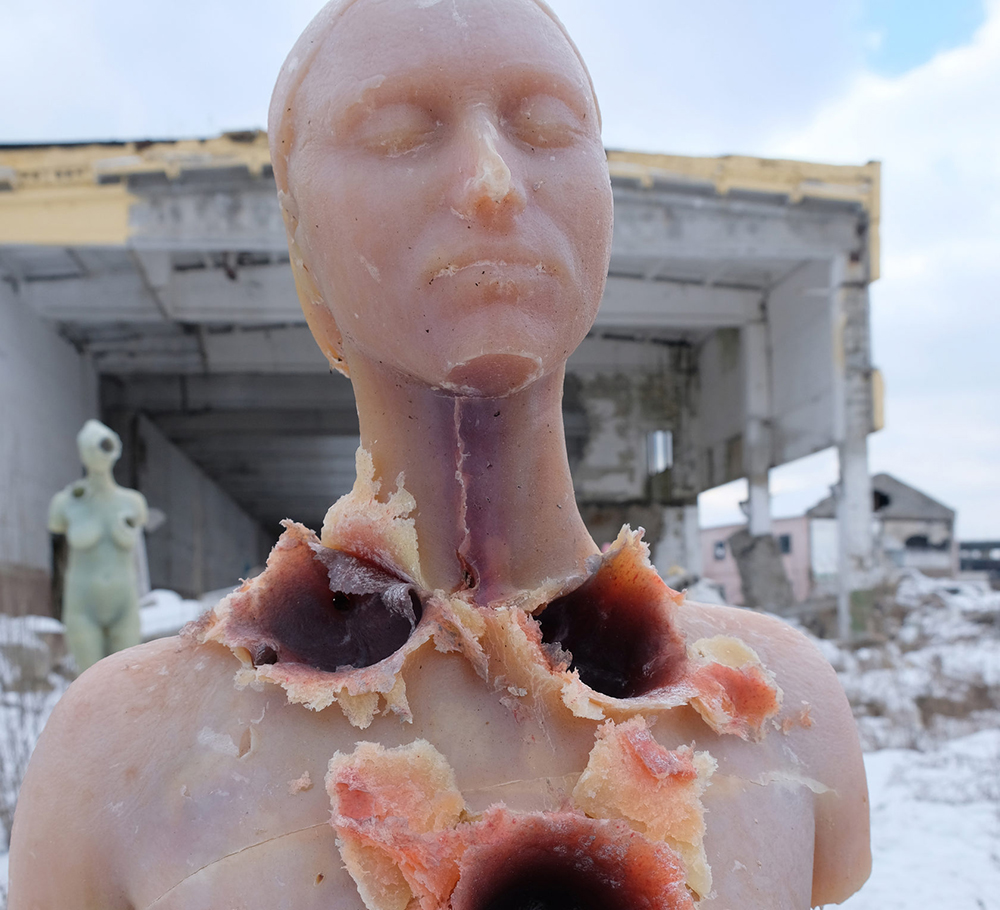
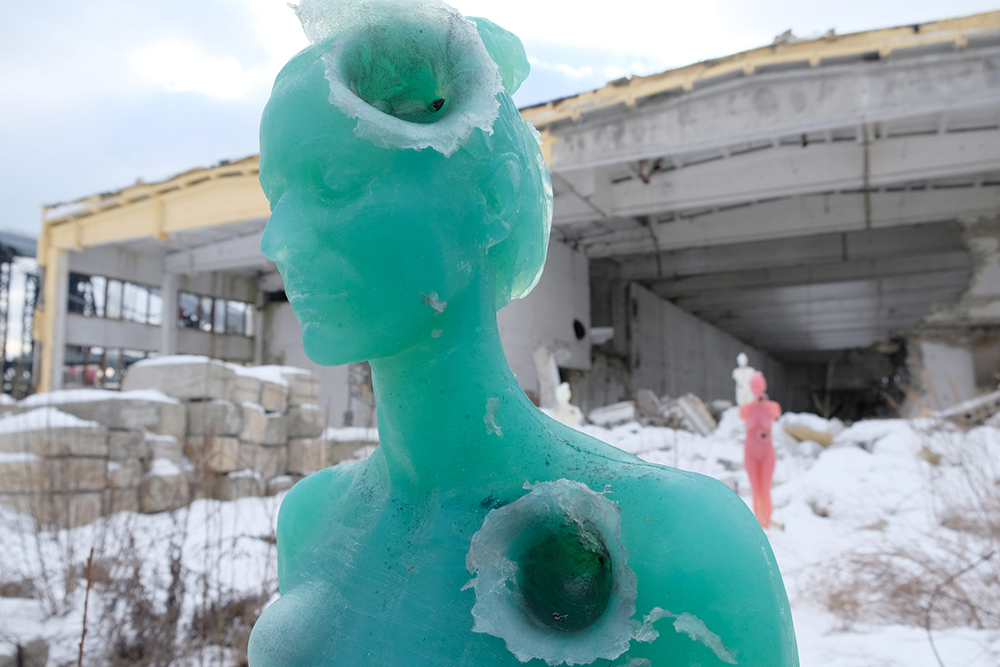

— In 2014 militants of the so-called DPR shot up your sculptures in Donetsk, calling them «degenerate art». This seems to be an element of the russian propaganda narrative about «decaying Europe», because performance art and actionism in general as genres are something abnormal for russian propaganda. What are your thoughts on the fact that your art can be used for different views?
— «Degenerate art» is a reference to Nazi Germany in general. The fact that these militants use their terminology shows who is who. Furthermore, they do not use art to present it as art, but only to emphasize that art and culture do not exist for them. And those who support those non-human terrorists show their level, they show that they have nothing cultural, artistic and humanistic.
What can I say if I was just lying on the stairs of the Hermitage, covered by the Ukrainian flag, and they added me to the list of banned artists. It’s just cloth, but they’re afraid of it. I can’t understand how much their brains are turned upside down. Of course the russians can use any element of culture to show their gap in perception, it’s their world and they are professionals at showing a distorted world. My brain just can’t comprehend such phrases as degenerate art, I don’t know how you can come up with such a thing.

— In 2019, you played the role of a pro-russian journalist in the film «The Forgotten». In an interview with Vogue, the director of the film Daria Onyshchenko called your role «a kind of revenge», because you embodied the image of «the person you despise». Do you agree with that statement? Why?
— In a way it was like that, I couldn’t understand what drives a man who went to kill like some kind of rabid beast, that he takes up arms for no reason at all. And I’m not talking about the sculptures, it’s not that important, because russians do more horrible things: they kill, rape, abuse.
I couldn’t understand the reason for that, so I starred in the movie to at least somehow answer the question, to get out of the state of frustration. I asked Dasha if I could play this role. It’s very short, literally a minute, but it’s very important to me, because I got very close and got into the skin of these people in order to live it and understand some things.
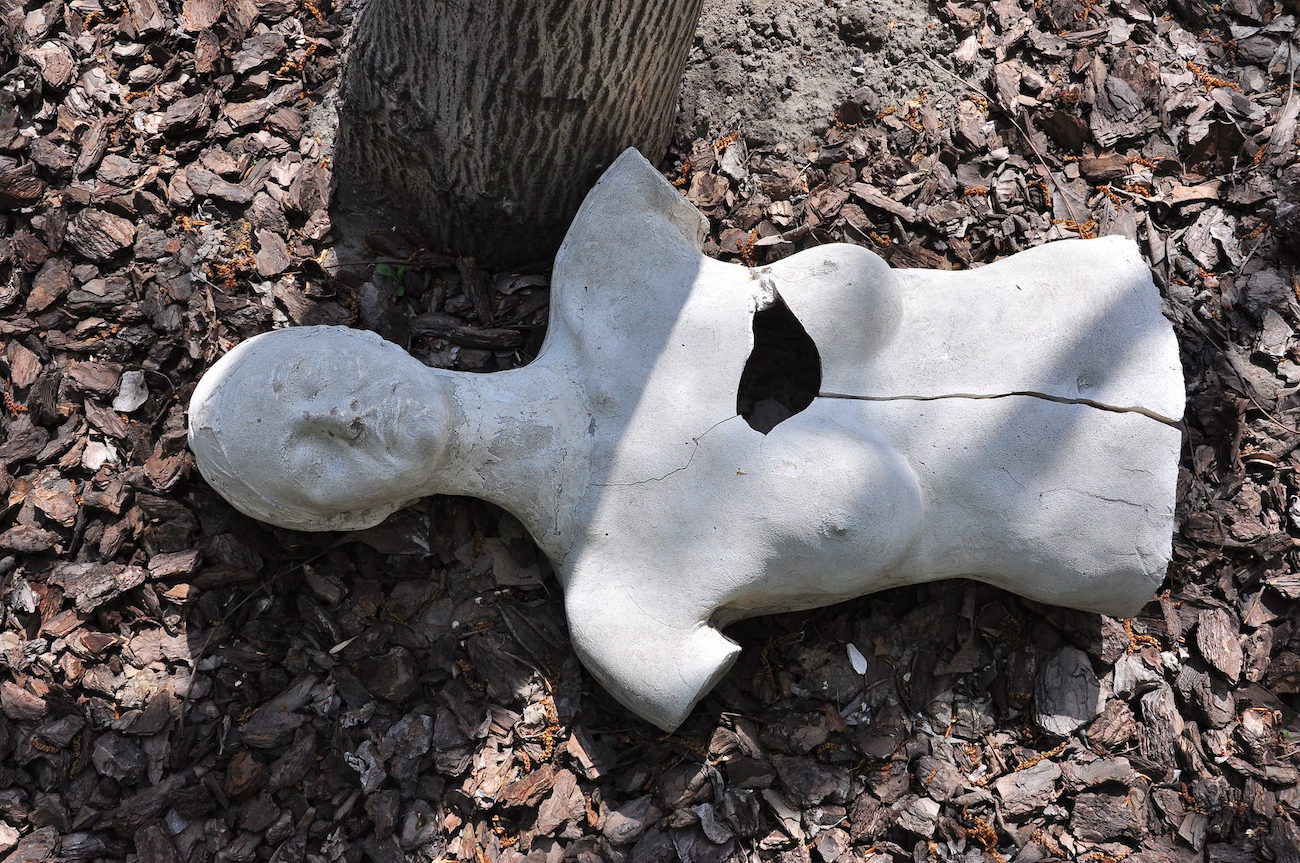
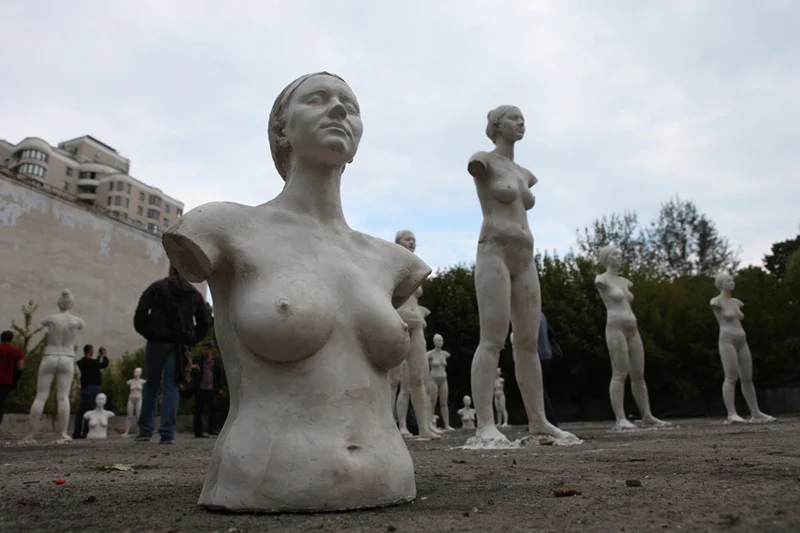
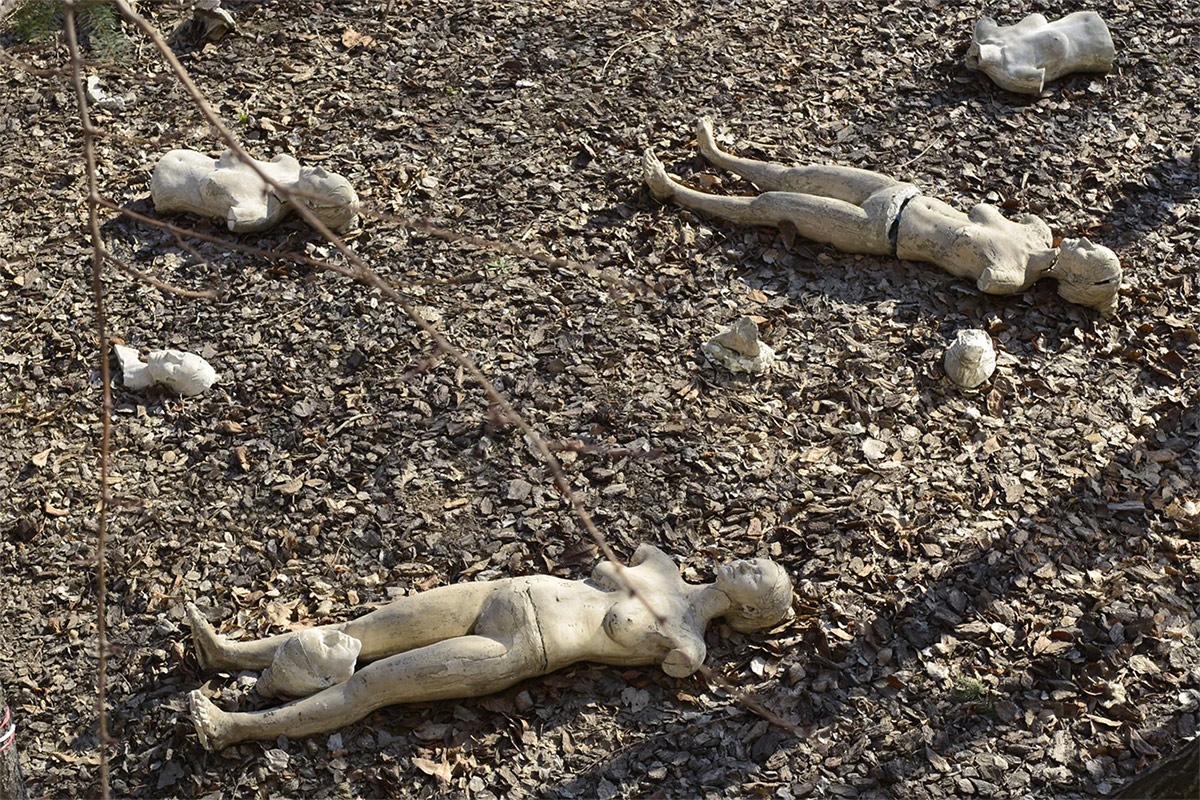
— Can a role in a film give a full understanding of these people?
— I realized it was about intoxicating power. When I was learning to shoot, I was embarrassed at first, but then I liked it so much that I was even asked to stop. I was in control, everything around me depended on me, I had the gun, not someone else. It was a whole new feeling.
About the fragility of life and the use of vanitas elements in sculptures
— You started adding flowers to ballistic soap sculptures in 2020. What influenced this and what kind of symbolism do you put into it?
— At first I didn’t add any elements «under the skin» of sculptures and casts, but Oleg (Oleg Vinnichenko, Maria’s husband and co-author. — Note from DTF Magazine) brought many new materials to my work. So I started working with epoxy resin, polymers, plastic. In the case of the flower sculpture, I had to fix and strengthen the framework inside. Oleg thought for a long time about how this could be done, so that it was not only an engineering solution, but also a conceptual one. And he suggested using chains instead of the usual rebar, it was very symbolic.
I also work with the theme of the fragility of life, with the vanitas genre, a traditional Renaissance theme. I did a little research on what flowers and elements they added, and tried to get close to what they were painting.

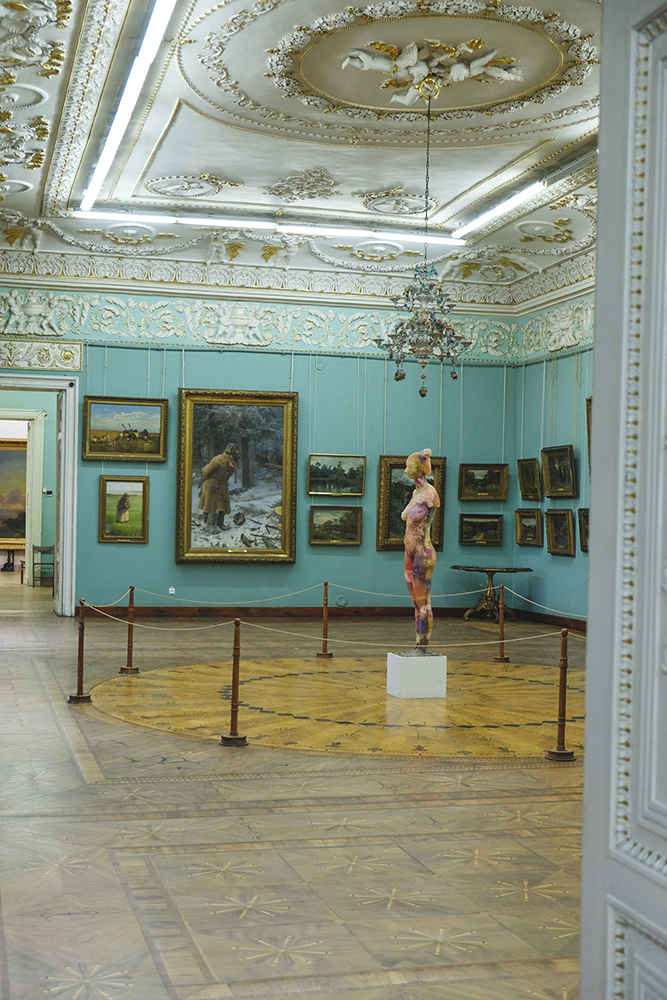
Soap Figure with Flowers, Odesa Fine Arts Museum, 2019
I started experimenting with colors when I had an exhibition in Odesa. The representatives of the museum (Odesa Fine Arts Museum. — Note from DTF Magazine) asked me to give them some work to keep after the exhibition, but they had a small budget, just ridiculous, so they found a patron, Fedor Serdyuk, who was helping the Ukrainian army at the time. He allocated money from his business for us to buy materials, so this exhibition was made by his own efforts and the efforts of everyone who cared.
This sculpture is floral, and therefore intensely beautiful. Everyone says it’s optimistic, but for me it’s the saddest figure because it’s about fragility, subtlety, and it’s also a visual representation of my homesickness.
I felt very bad at the time, but I felt much better when I made this sculpture, dealt with the traumas and visualized them, and that was very important to me, too. It is also symbolic that this figure as a quintessence of my own experiences is located in the nearest possible city to the Crimea. It is a fragile, delicate and vulnerable, but at the same time strong guard, looking toward home.
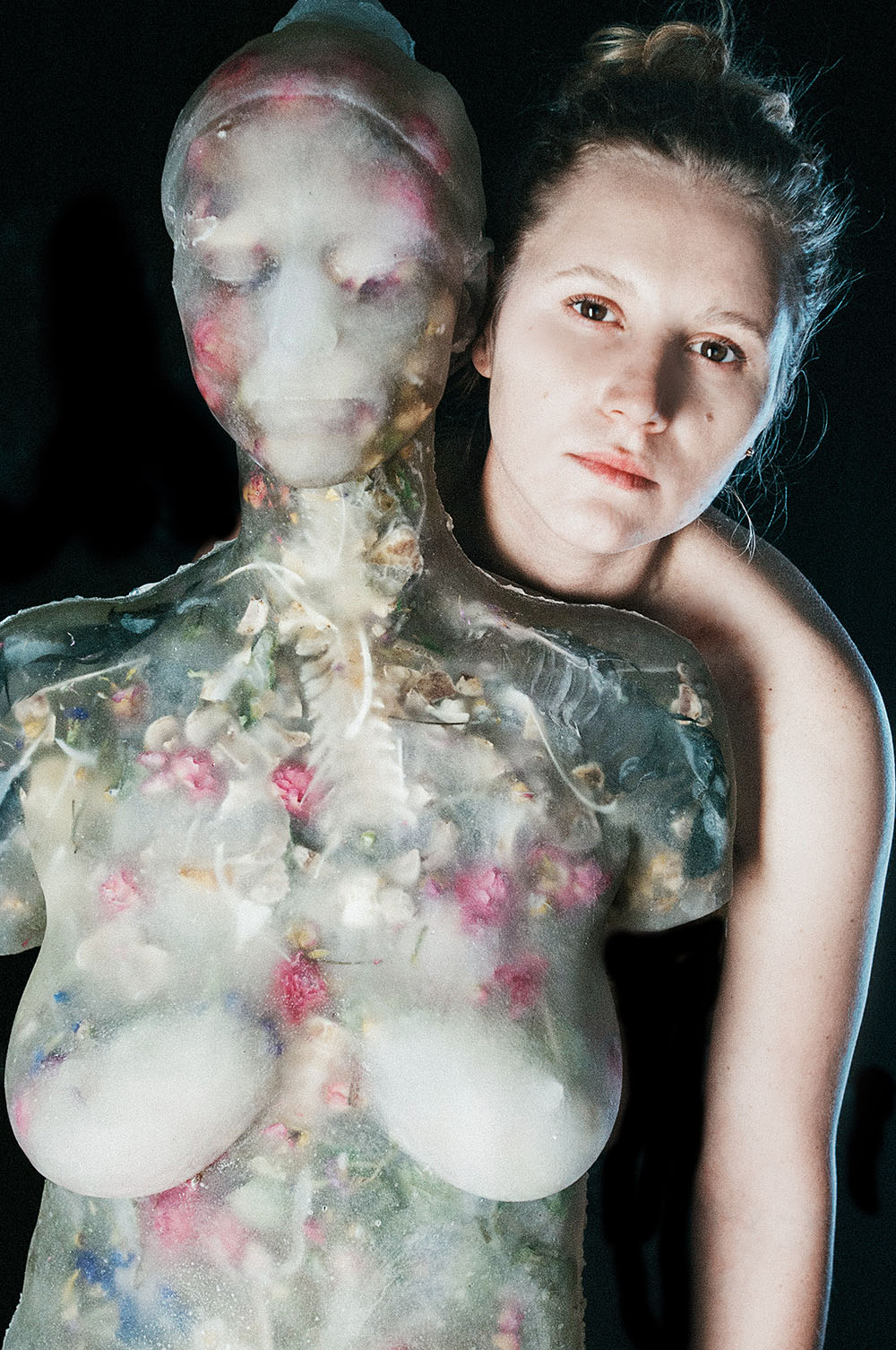
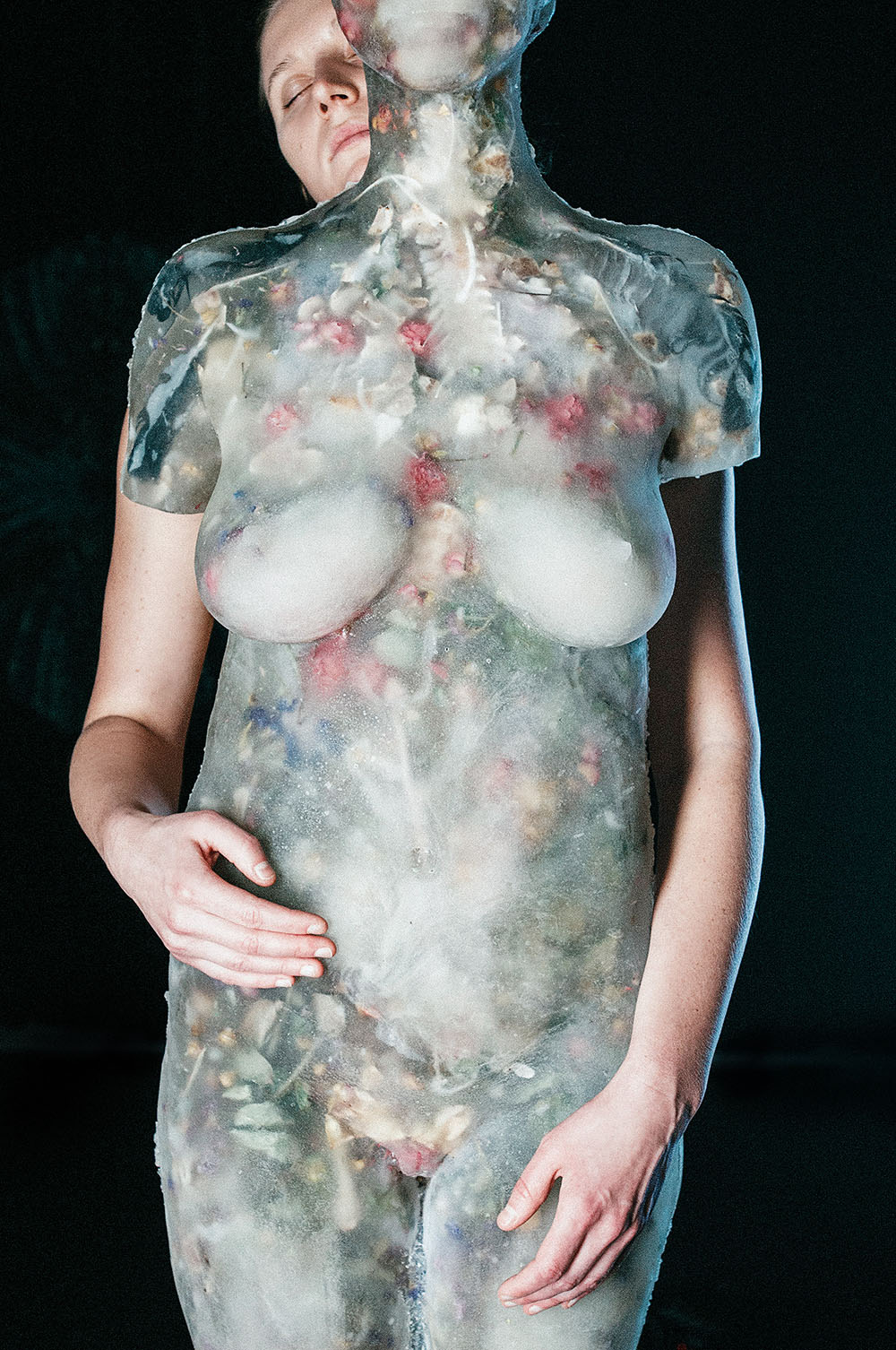
— Does the awareness of the inevitability of death and the fragility of life help you live during war? For example, some people have begun to do things they used to be afraid to do because they realized that war has increased the likelihood of sudden death. Or do you think this approach works better in peacetime?
— My inner state did not change much after the full-scale invasion began. I did not look at the world through rose-colored glasses, and for me the war began not on February 24, but almost nine years ago. Yes, everything is much large-scale now, and it is no longer a war, but a kind of overt sadism on the part of russia. But I have been anticipating this since 2014, I have dealt with this horror and fear, and I know how to deal with many other things. The fatalism and courage attributed to me is explained by the fact that I began to feel everything earlier. Maybe now my works will become more understandable for many people.
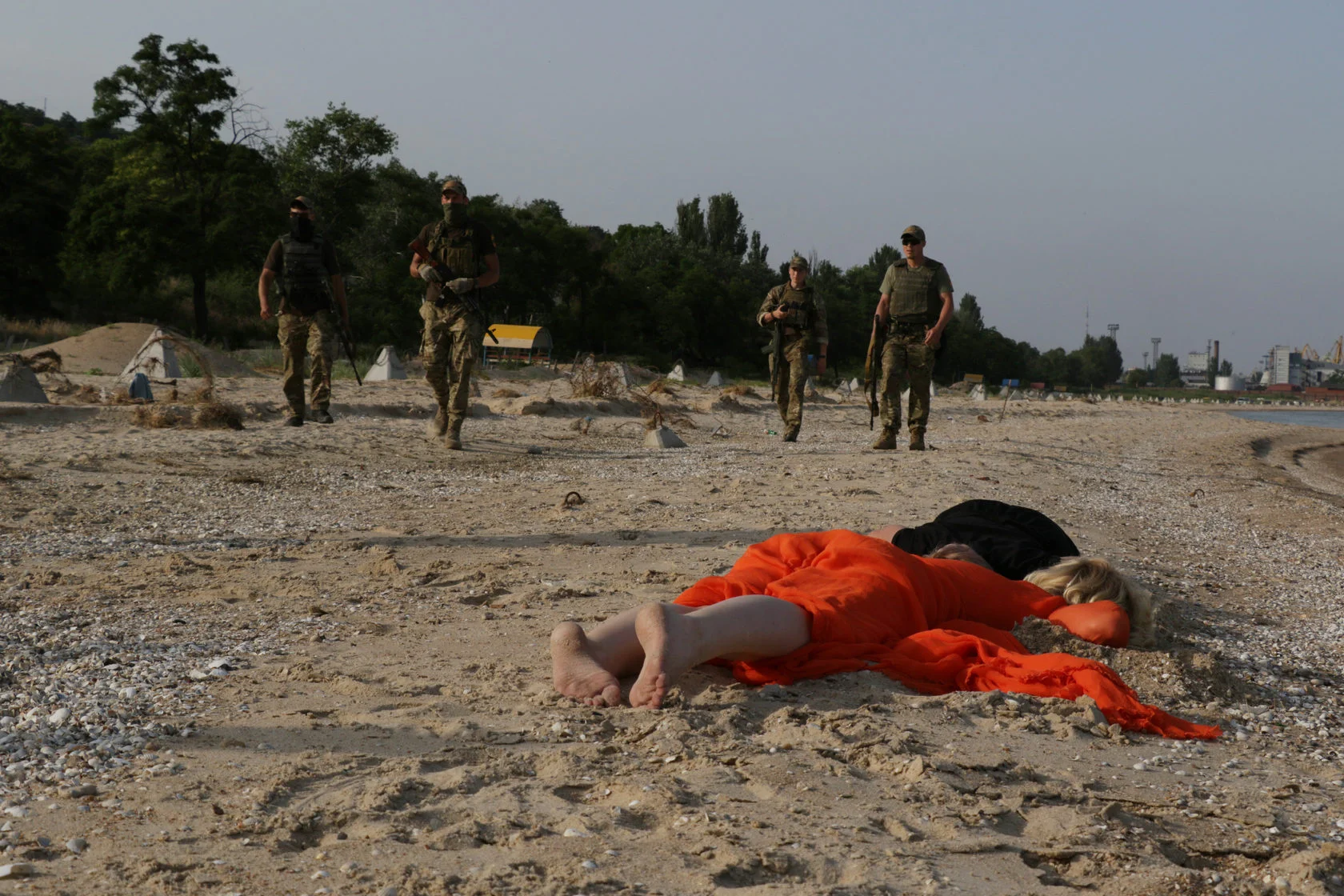
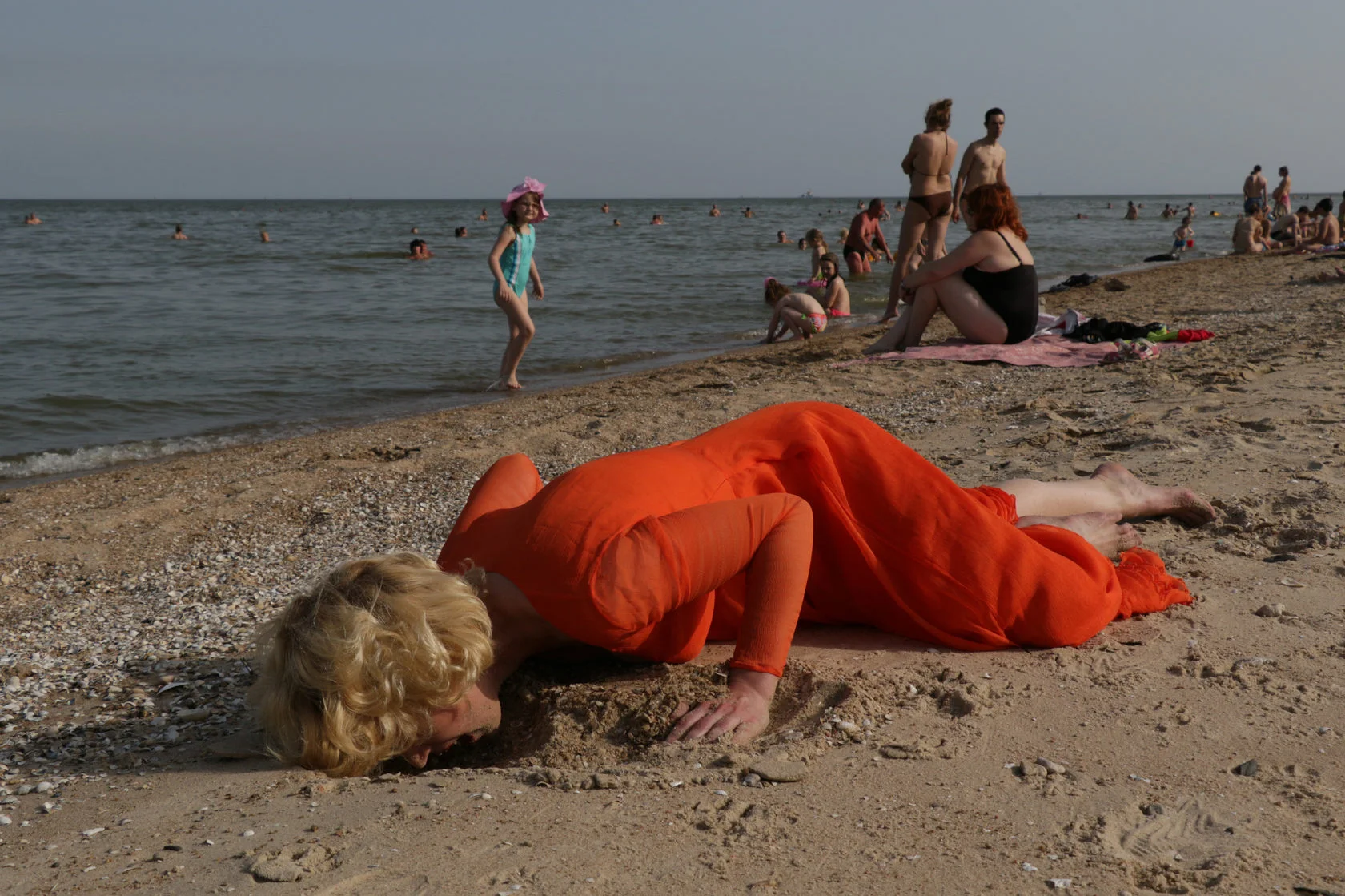
About intelligent architecture and a workshop-gallery in garages
— Oleg Vinnichenko is an architect-engineer by profession; you are also an architect. How does this architectural background help you to work together on projects?
— For example, if I do a performance, I still work with the space, the history, the location; I plan in which direction the object will look and where I will be located. That is, I work like an architect: I study the location, make a master plan if it’s a public space or an enclosed gallery space.
Sculpture often contains experimental and high-tech materials used by Oleg, which would not look right without an engineering approach. And in this case, too, you always need the work of an architect: the design, the selection of materials, the interaction with the space, with the context.
I do not exclude that I will continue to work in this specialty, it’s just that I am quite a specific architect. I don’t want to do commercial projects, but more intellectual things. I want to perceive architecture not just from a utilitarian point of view, but from the point of view that space has a meaning, tells a story and a concept, and every detail matters.
We, for example, almost completed our workshop-gallery in «Garage33» garages, and there were reasons for that, too. I would like to lay the beginning of the revitalization, the reorganization of the garage cooperative, because due to the cultural intervention, changes began in the area of Kyiv where we live.
I probably wouldn’t have wanted to have another higher education, because architecture is like the mother of all the arts: it incorporates painting, graphics, composition, even rhythm and philosophy. But it was hard for me to study. I even compared us to doctors because of the intense program and workload. Back then, we slept a maximum of three hours a day in order to be able to do everything, we studied many subjects. Now it’s all good for us, because we can do any kind of work with space.

— You will be presenting the sculptures «Folds of Time / Folds of Memory» in the MOT cultural space. Tell us more about why you chose this particular work. What is the story behind it?
— The sculptures created from casts of my and my mother’s body parts were first made of fiberglass, a super-strength material used to build airplanes and rockets, and covered with paraffin, so these sculptures are incredibly fragile.
I reflected a lot on the war reports I constantly saw in the media. I did not know and never saw these people, but every injury and death that was reported, I experienced as a personal loss. Therefore, apparently, the «Folds of Time / Folds of Memory» figures are a bit disfigured and covered in folds — my subconscious fear affected this.
But it is difficult for me to put this idea into words, because I make visual objects and I don’t like to describe what I have already done. It’s a visualization of my own emotions and feelings, which are so great that I don’t have enough words to express them.
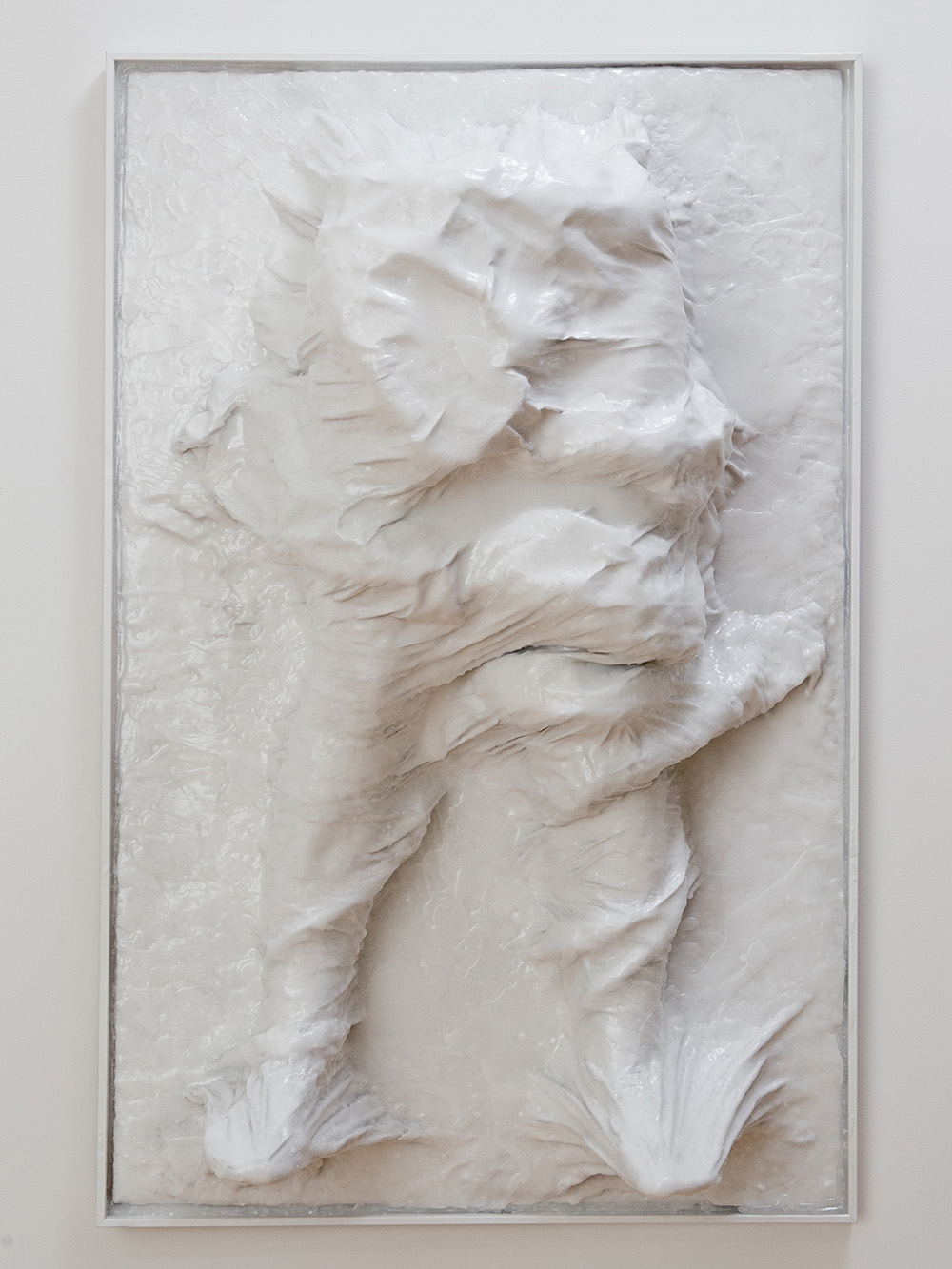
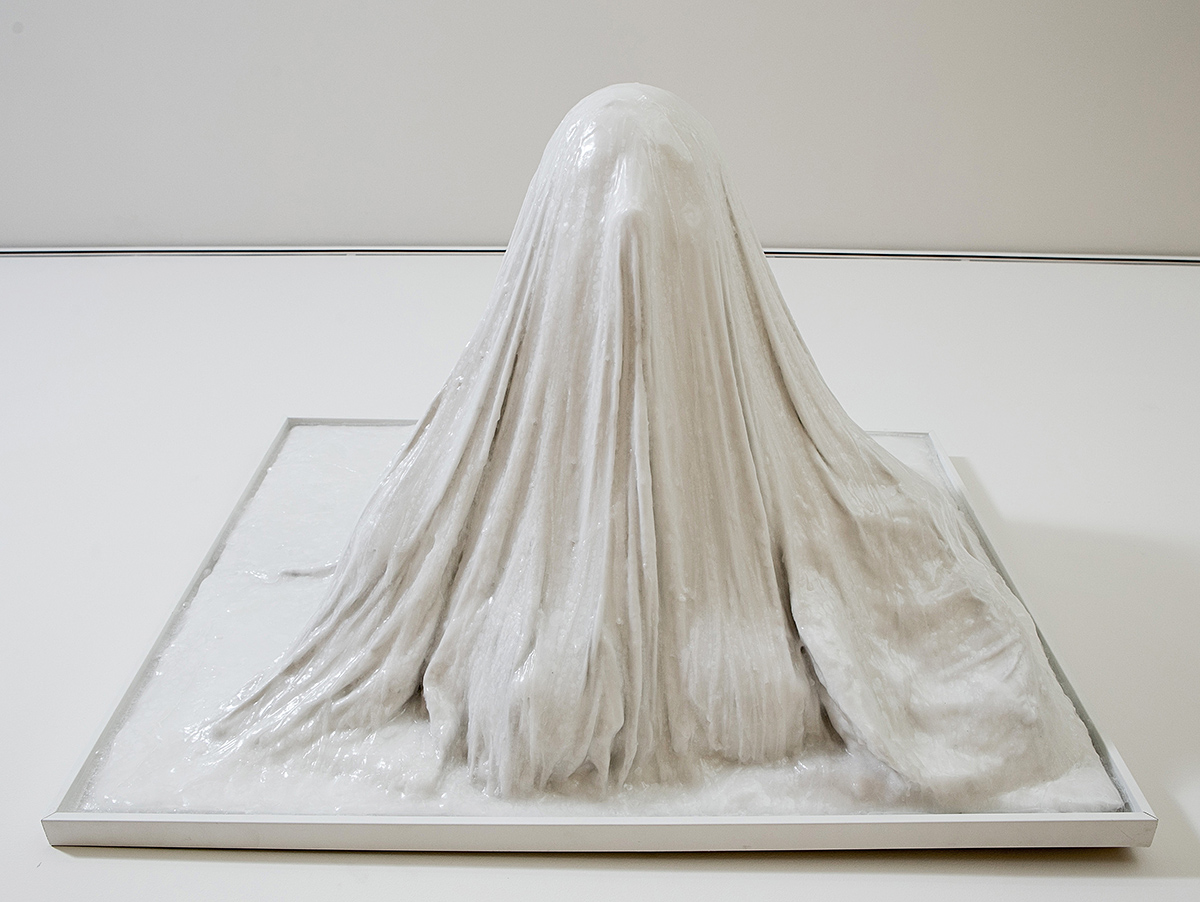
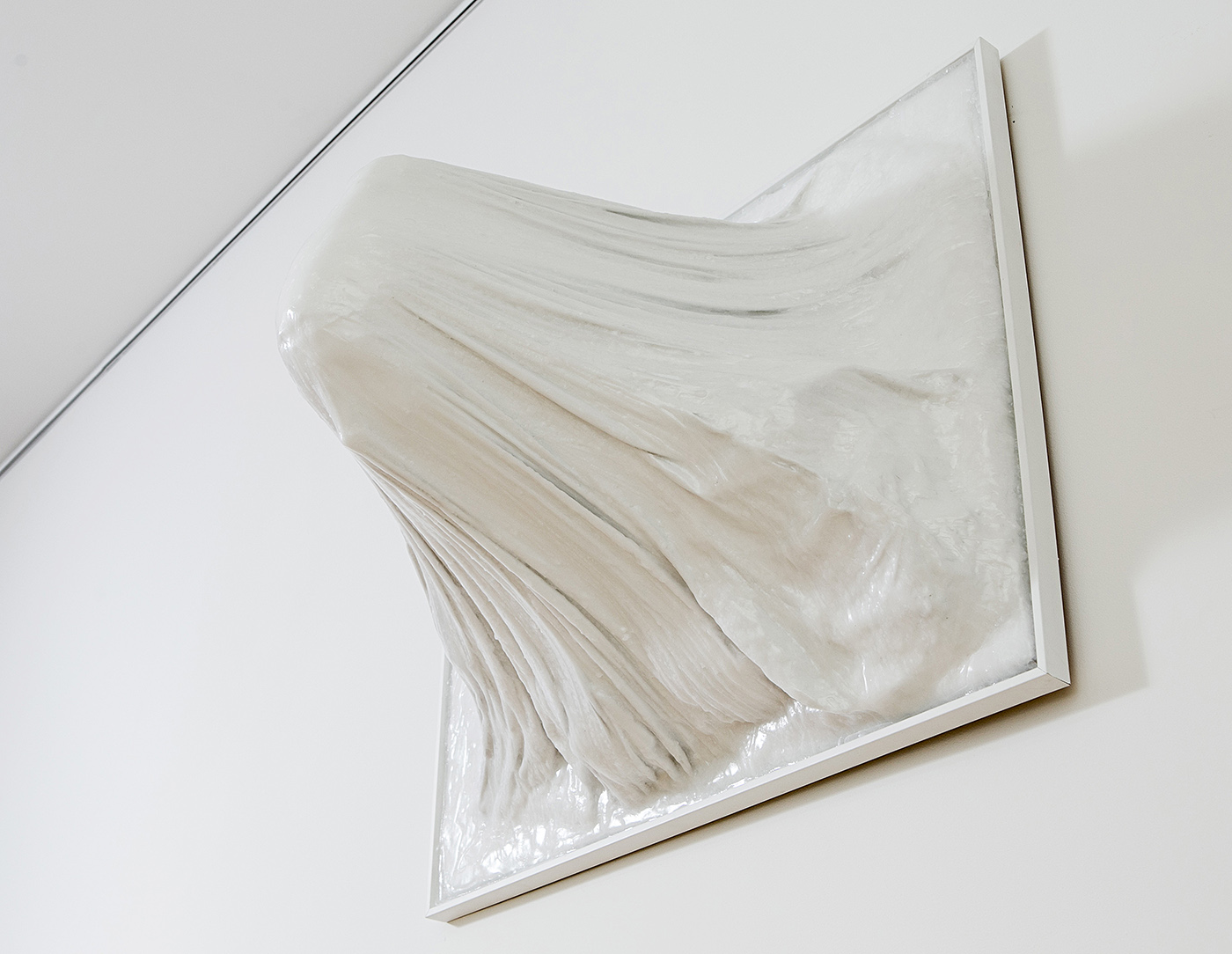
Sculptures «Folds of Time / Folds of Memory» by Maria Kulikovska will be on view in Kyiv at the MOT exhibition of contemporary art from February 17 to May 14. The theme of the exhibition is dedicated to the concept of Temporality
